How to plan kitchen lighting — create a scheme in sync with your routine
Get expert advice on how to plan kitchen lighting to create a scheme that's clever, good-looking and hard working
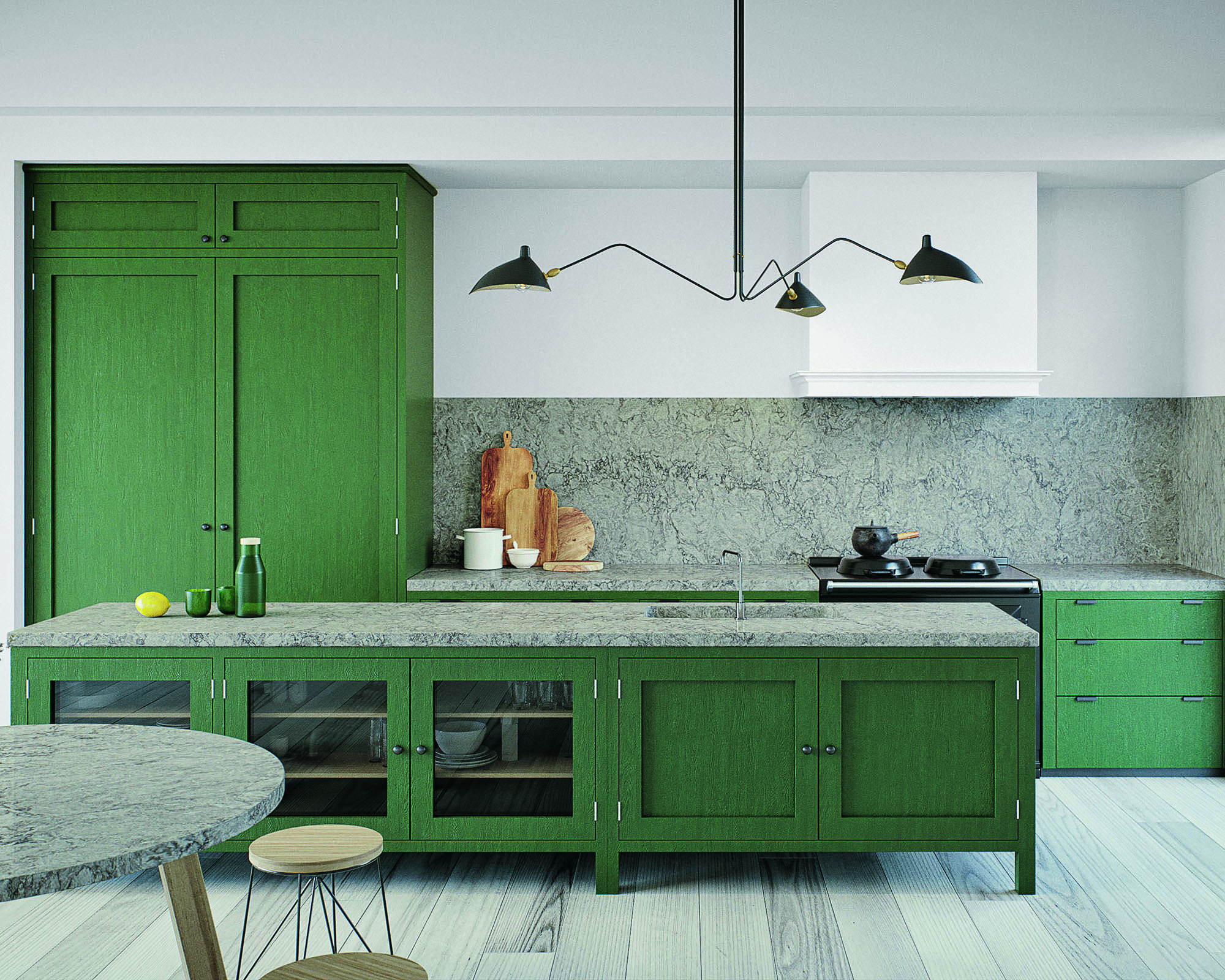

It is important to start thinking about how to plan kitchen lighting as early as possible in your kitchen design process.
The kitchen is the ultimate multi-tasking room in the home – a space to prepare food, entertain and (these days) work from home. The right kitchen lighting layout should allow the kitchen to flow seamlessly through each of these roles.
Good kitchen lighting ideas will offer different levels of brightness and be able to alter the mood and feel of the room. Lighting schemes can make a space feel larger or cozier with a combination of well-placed task and mood lighting.
'Lighting is an extremely important element of a kitchen's design,' explains Daniel Bowler, Director of Eggersmann UK. 'Yet it is often something that gets left until last. Including it as part of the early planning process if you are redesigning your kitchen will give a much more effective result.'
How to plan kitchen lighting
When thinking about how to plan a kitchen lighting scheme, you need to ensure it includes three types of lighting: task, accent and ambient.
Task lighting is the brightest and used to illuminate work areas, while ambient is softer. Accent lighting, also sometimes called feature lighting, refers to the visual interest it adds to a kitchen, either through the fitting itself or the light it emits.
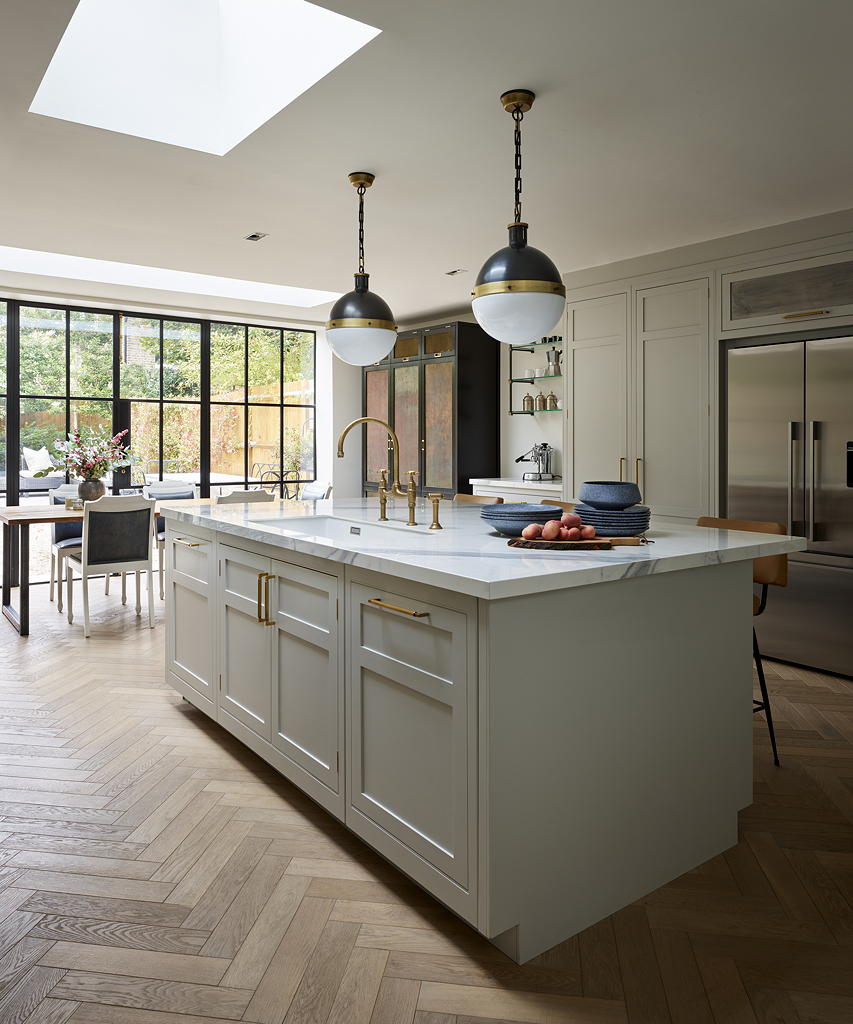
How do you design a kitchen lighting layout?
When choosing kitchen lighting and planning your layout, always start with task lighting.
'The first thing to consider is where in the kitchen needs to be particularly well lit,' explains Daniel Bowler. Most working areas, such as countertops and the cooker, will need to be fitted with functional task lighting.
After establishing this foundation, think about how you want the kitchen to look when you are not cooking. When planning your ambient lighting consider how much natural light there is in the kitchen and the mood you want to create. For multi-functional kitchens, it is worth considering dimmer switches to alter the brightness.
Finally, add another layer of visual interest to your lighting scheme with accent lighting. Accent lighting guides the eye, so consider any areas of the kitchen decor you would like to highlight.

What type of lighting is best for kitchens?
Task lighting is an essential part of any kitchen, commonly integrated into wall cabinets or above working areas. There are lots of variations of task lighting to choose from.
Small, compact fluorescent lighting can be slipped into the recess in the bottom of an overhead unit.
LED lighting can be fitted under cabinets or in drawers, pantry units and other kitchen storage solutions. Ceiling mounted lights with directional spots or pendant lights will also work as long as they create a focused beam of light.
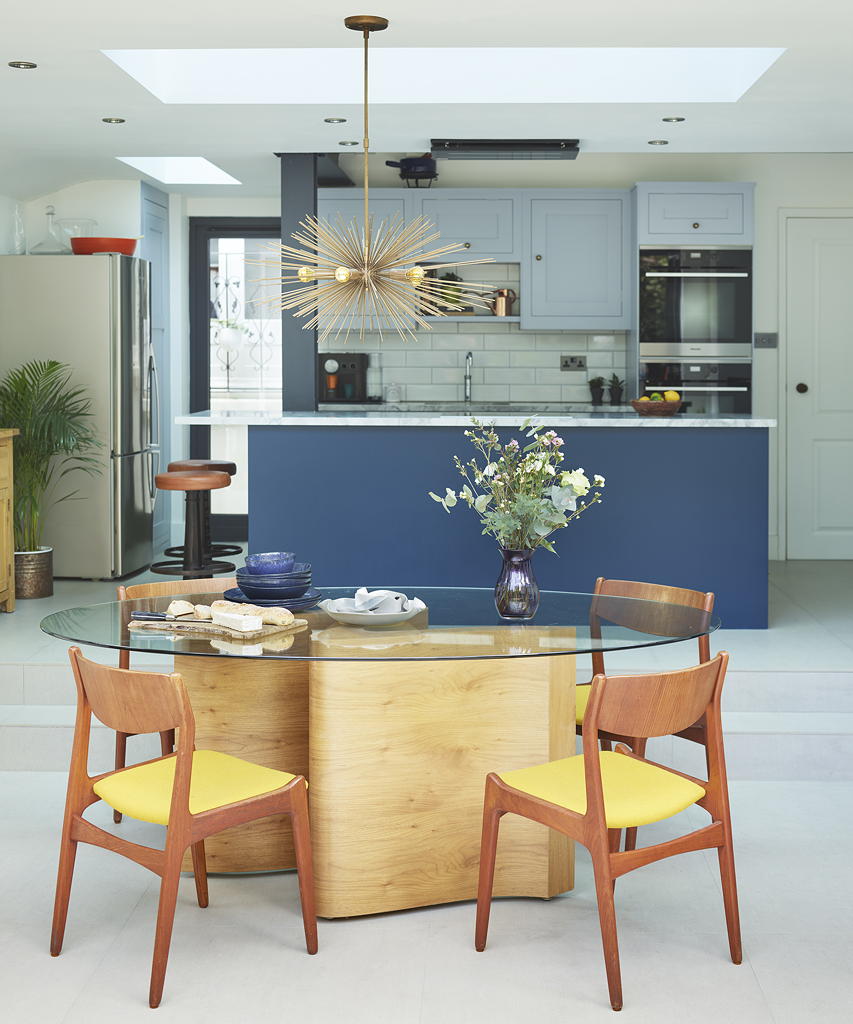
Ambient lighting needs to give off a soft, diffused glow. This can be achieved with a ceiling-mounted lighting fixture, recessed lights, kitchen wall lighting or washers.
Recessed lights, flush mounts and semi-flush mount ceiling lights are useful when thinking of small kitchen ideas because they don't take up too much room. High ceilings will benefit from uplighters on top of the kitchen cabinets to enhance the general light.
'To create a warm atmosphere in the evening, choose lights that can be transitioned from cool to warm,' recommends Graeme Smith, Head of Retail and Commercial Design at Life Kitchens. 'Offering versatility, the adjustable tone means that it can be cool when cooking and warm when dining or entertaining.'
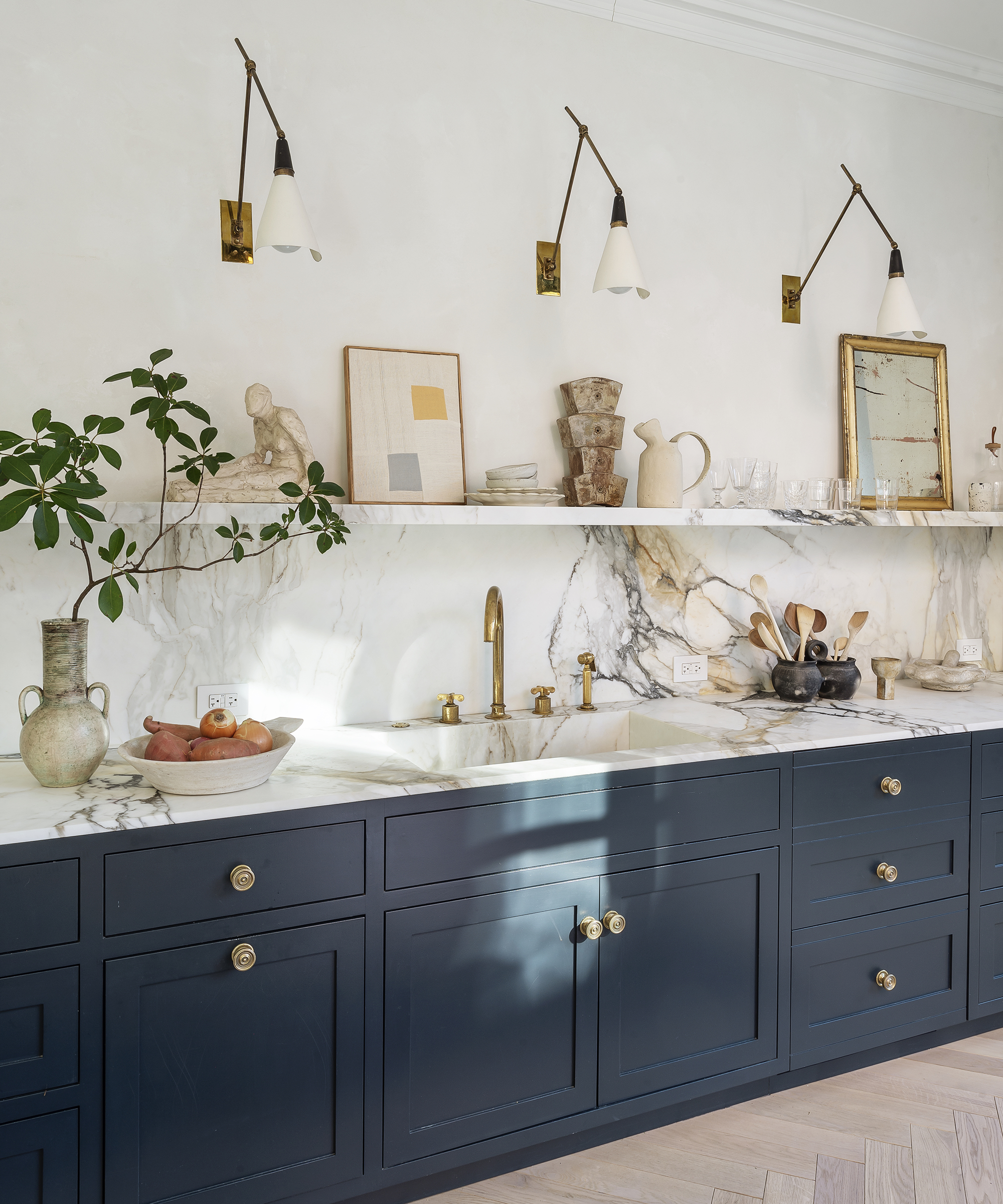
Accent lighting can come in many different forms. It can refer to a statement floor lamp used to illuminate a corner of the kitchen, or LEDs built into the plinth of a central island to make it appear as if it is floating. It can also be used as backlighting to add to the aesthetic of the kitchen.
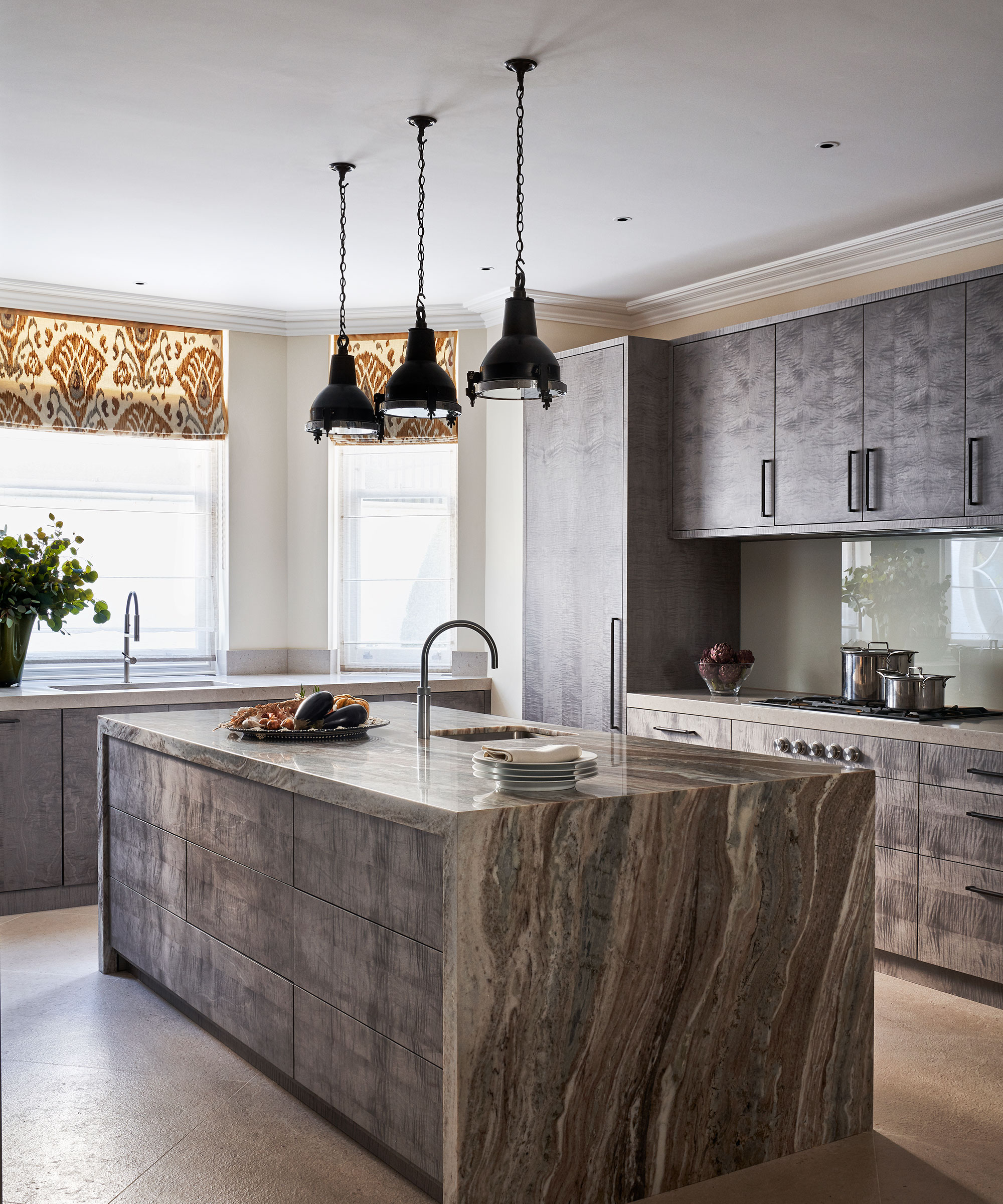
How do you calculate kitchen lighting?
To calculate how much light your kitchen needs, you need to talk in terms of lumens. Lumens refer to brightness levels. How bright your kitchen lights need to be will depend on what you are using your kitchen for and how many lights you have.
To work this out, multiply the kitchen floor area in square feet by the foot-candle (light intensity) needed. So if your kitchen is 100 square feet, which will need between 10 and 20 foot-candles, you will need 1,000 to 2,000 lumens. Bulbs deliver a certain number of lumens, so you can work out how many bulbs you need by dividing the number of lumens by the number of lumens each bulb delivers.
Happily, a good lighting designer – or experienced interior designer or builder – will be able to advise you on what you need.
'If you have one light, then you need it to be as bright as possible, but again, dimmable,' explains Niki Wright, lighting design expert and founder of Lights & Lamps. 'If you plan your kitchen with various forms of lighting all around, it will be bright enough to work in.'
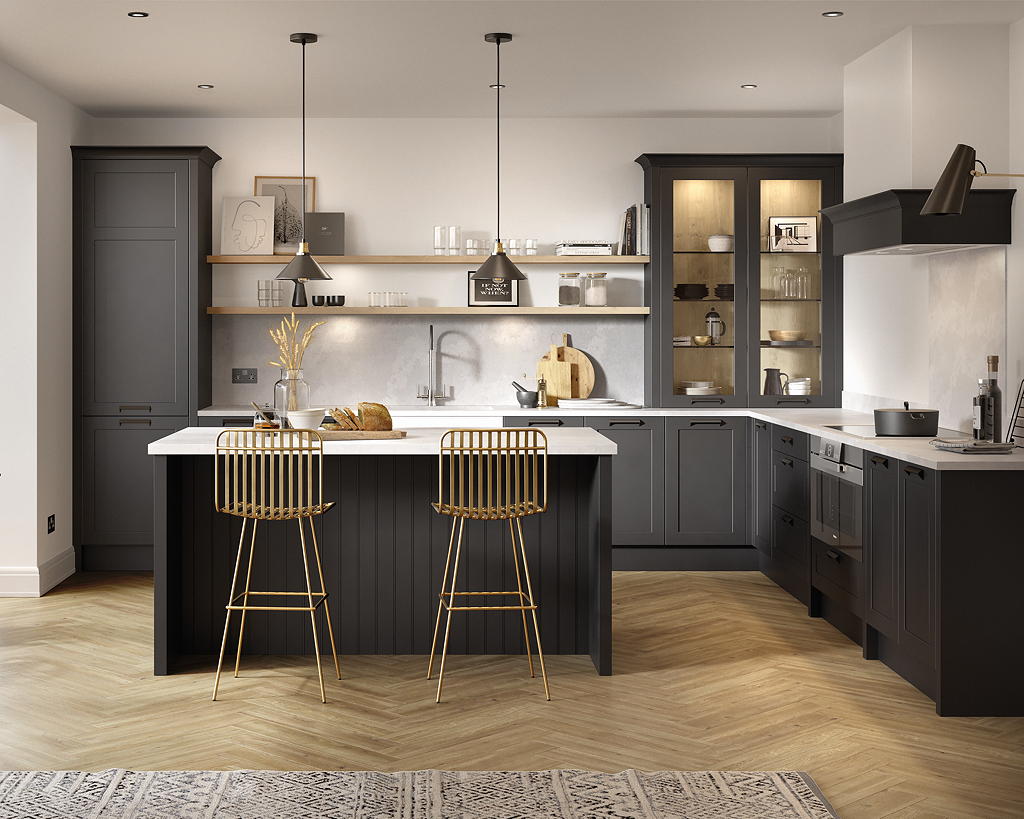
Where should kitchen lights be placed?
Think about the purpose the light is serving when choosing where to position it in a kitchen.
Task lighting needs to cast light over a countertop, unimpeded. This means that it needs to be positioned to hit the back/center part of the countertop, so that when you are bending or leaning forwards over it – perhaps chopping, mixing or stirring – your shadow is not cast over what you are prepping, but just in front of it, meaning that it is illuminated perfectly.
'Make sure you position spotlights or pendants directly above key areas to ensure the light isn't blocked when you stand at the sink, hob or worktop,' explains Melissa Klink, Head of Design at Harvey Jones.
Accent lighting should be installed around any decor or architectural details you'd like to accentuate. Position the light one to two inches from the back of a shelf to create a backlit effect.
Where you position ambient lighting will depend on the light fitting you have chosen. Flush or semi-flush fittings will usually sit over the kitchen island, or in the center of the ceiling if you don't have one.
However, recessed lights need to be spaced out across the ceiling and set a few inches back from the front edge of countertops to avoid casting a shadow.
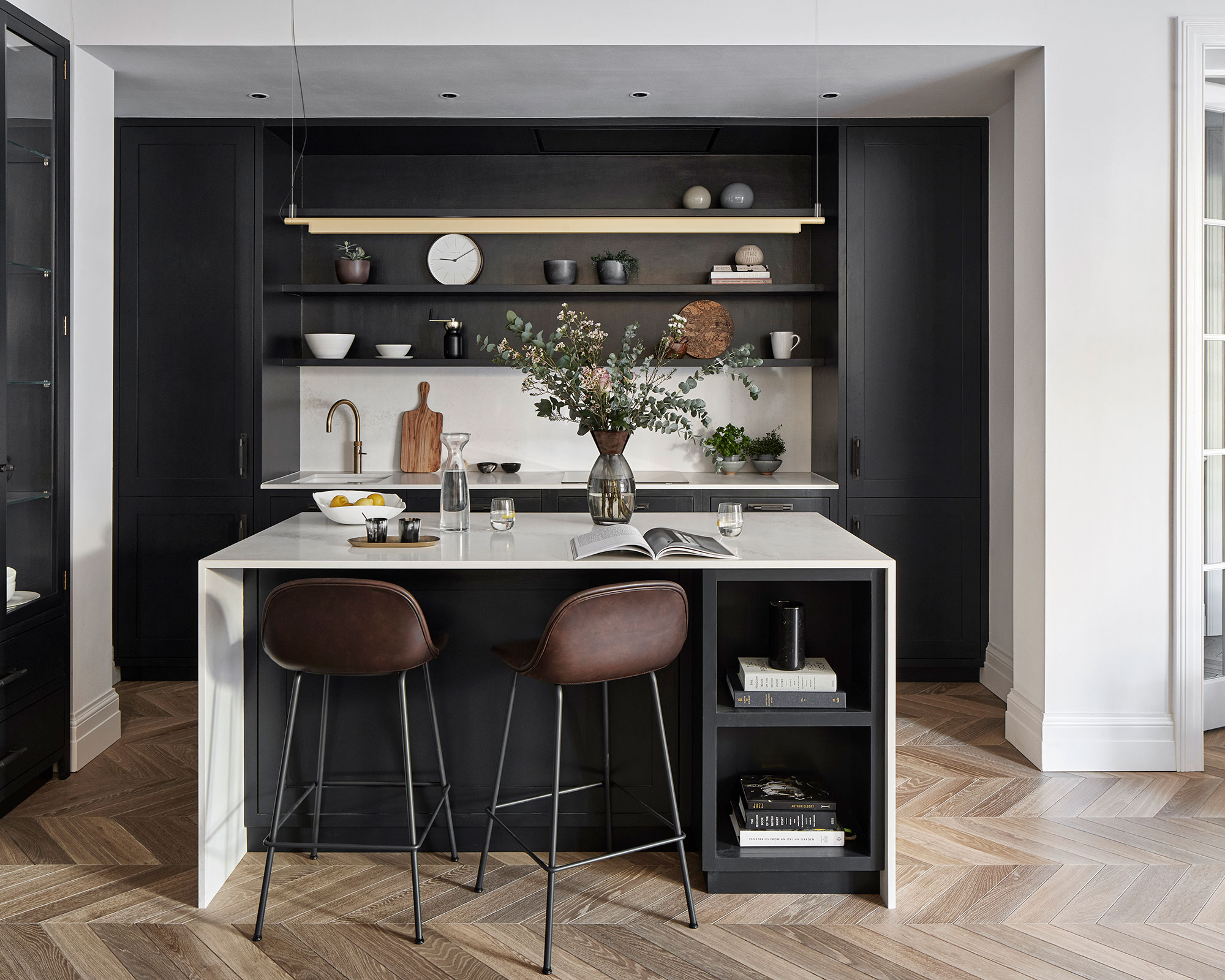
How should I light a kitchen island?
A row of matching statement pendants are a clever way of lighting your kitchen island. They create an eye-catching feature that will also provide practical task lighting.
However, Niki Wright suggests getting more creative with your kitchen island ideas. 'Think about what a kitchen island is used for. Is it purely prep and cooking or is it used as a dining and social space?' he asks.
'A combination of dimmable recessed downlights alongside a more decorative pendant or even a chandelier can really change the whole feeling of the area.'
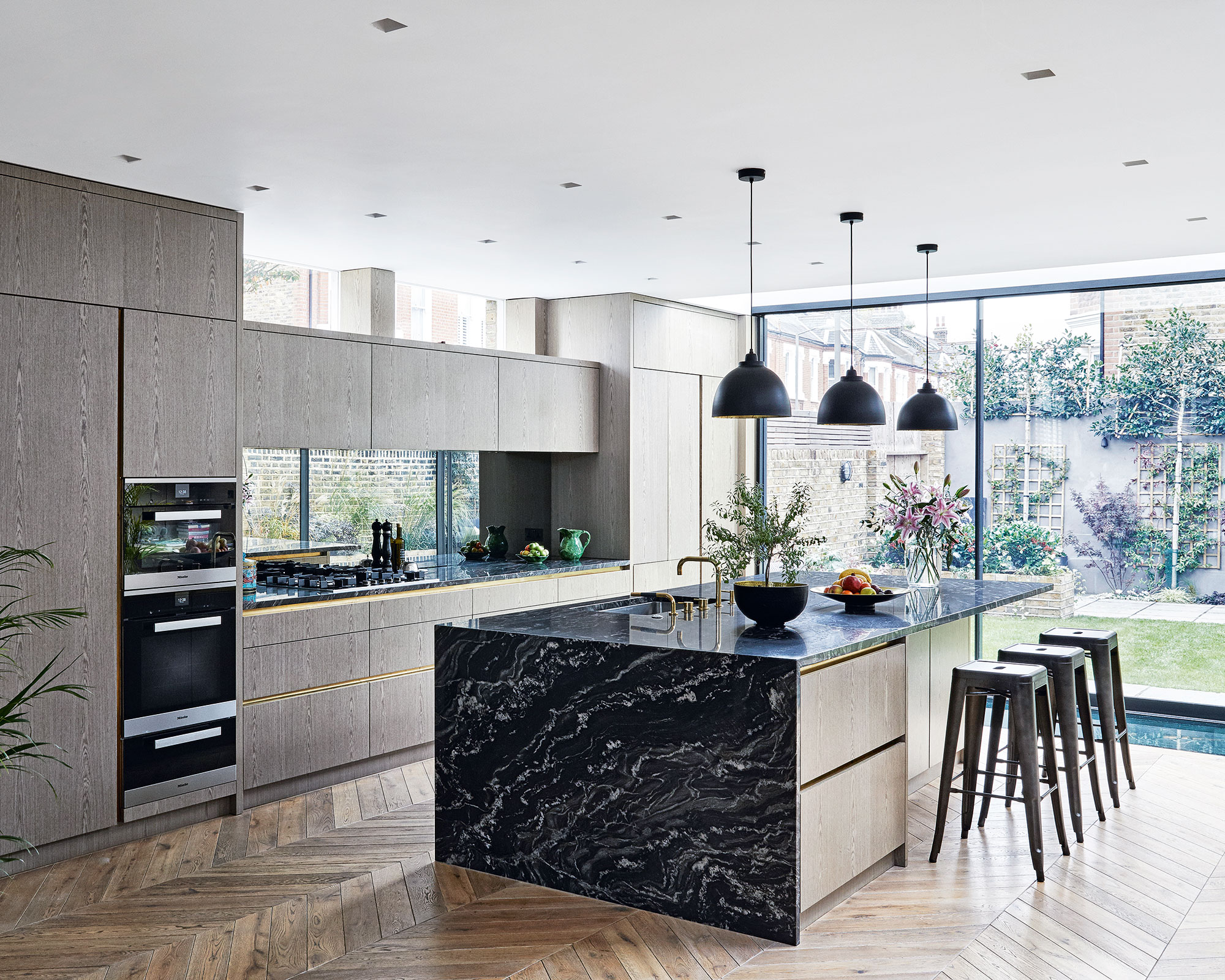
Are LED lights good for a kitchen?
LED lights are a perfect modern kitchen lighting option – more eco-friendly than other types of lighting, they give off little heat and can create a natural daylight feel.
Cool white LED lights are best suited for the kitchen, whether you are using them for task, accent or ambient lighting. To help you pick the correct color, check the Kelvins – a bright or cool white will usually be 4,100 Kelvins.
'In a kitchen, you do not really want to go below 3,000 Kelvins as the light becomes too yellow,' explains Niki. 'But make it dimmable and you can create the right ambience for when the cooking turns to eating.'
Sign up to the Homes & Gardens newsletter
Design expertise in your inbox – from inspiring decorating ideas and beautiful celebrity homes to practical gardening advice and shopping round-ups.

Rebecca has been working as a homes and interiors journalist for over four years. She first discovered her love of interiors while interning at Harper's Bazaar and Town & Country during my Masters in Magazine Journalism at City, University of London. After graduating she started out as a feature writer for Women's Weekly magazines, before shifting over to online journalism and joining the Ideal Home digital team covering news and features. She is passionate about shopping for well-crafted home decor and sourcing second-hand antique furniture where possible.
-
 Gloria Steinem has embraced 2025's biggest color trend in her living room since 1990 – her uplifting space reassures me it will never go out of style
Gloria Steinem has embraced 2025's biggest color trend in her living room since 1990 – her uplifting space reassures me it will never go out of styleImages of Gloria's living room in 2025 and 1990 show a butter yellow wall in common – experts explain the shade's everlasting properties
-
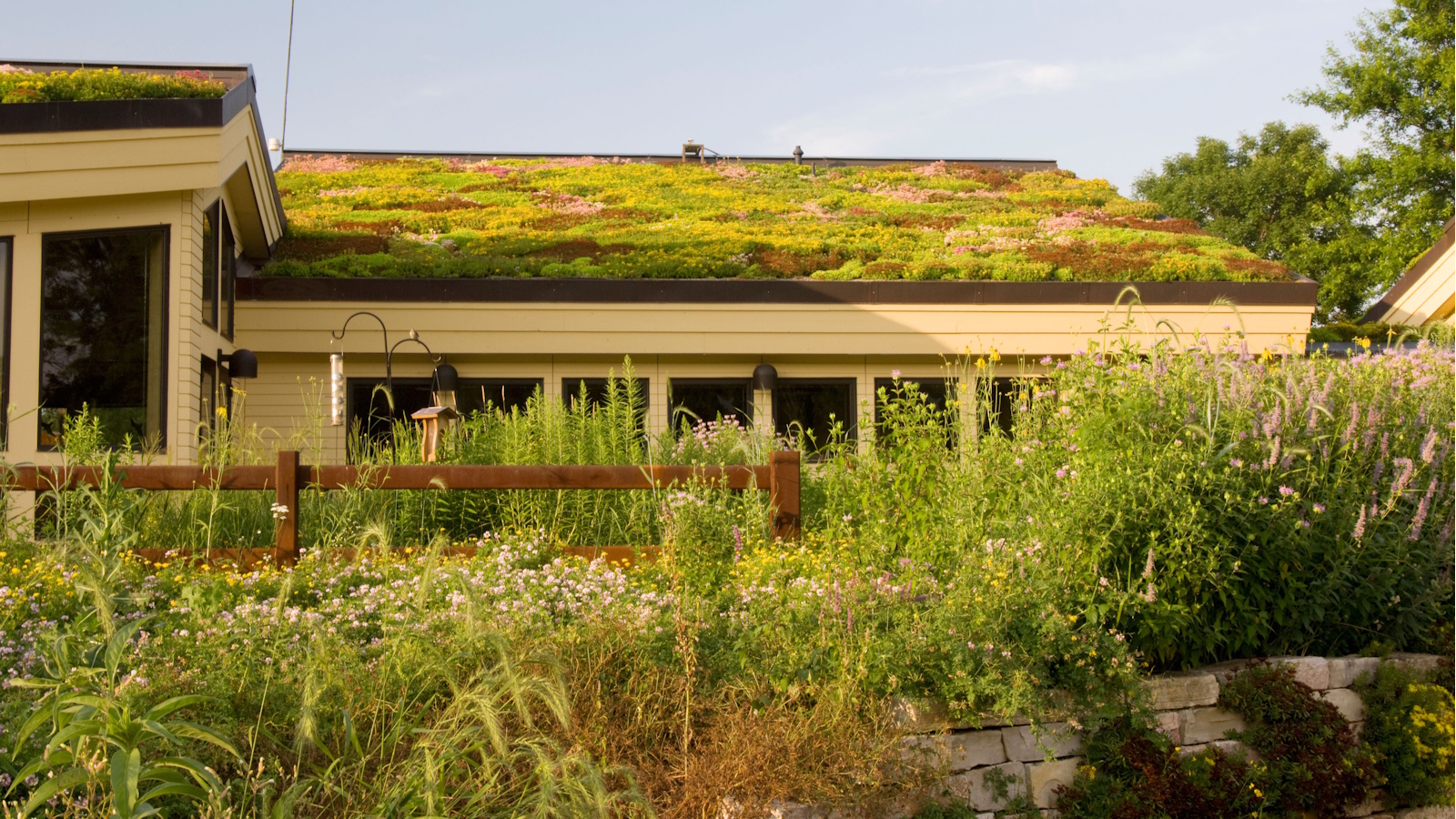 Landscaping experts reveal you can grow a fire-resistant green roof with these 5 plants – they'll help protect your home from wildfire damage
Landscaping experts reveal you can grow a fire-resistant green roof with these 5 plants – they'll help protect your home from wildfire damageSucculents are some of the best choices for a fireproof green roof